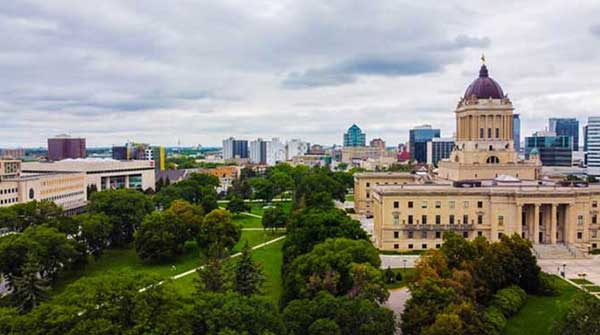 The scourge of COVID-19 is slowly being beaten back but Manitoba’s economy was in trouble before COVID-19 and the last 15 months have weakened it even more.
The scourge of COVID-19 is slowly being beaten back but Manitoba’s economy was in trouble before COVID-19 and the last 15 months have weakened it even more.
Before COVID-19, the province’s economic weakness could be attributed to its big-spending governments. The Liberal federal government, the Progressive Conservative provincial government and Winnipeg’s municipal government continue to dominate the province’s economy without having a clue how to operate for the benefit of taxpayers.
A recently commissioned review of Newfoundland and Labrador’s finances concluded that the province’s desperate fiscal state requires slashing provincial expenses, upping taxation and receiving even more federal help.
Is Manitoba in much better financial shape than Newfoundland and Labrador?
Hardly. Real substantial change is needed if Manitoba is to climb out of its debt spiral without drastically raising already excessive provincial debt and taxation.
The present design and state of our government-dominated economy has taxpayers and lenders feeding governments that remain disproportionately large relative to the regular economy. Our politics are invasive and expensive – federally, provincially and municipally. Government is big in Manitoba.
Electricity, natural gas heating, car insurance, hospitals and schools are almost completely organized as public monopolies.
Coupled with the broad tasks of Manitoba’s generally monopolized provincial and municipal governments, ignoring, for now, the tasks and numbers of employees of Manitoba-based federal government agencies (also disproportionately large compared to other provinces), we have powerful unions. The Manitoba Teachers’ Society (MTS) has just joined the Manitoba Federation of Labour (MFL), representing a relatively insulated (no lockdowns) super-class of at least 175,000 Manitobans.
Private enterprises in Manitoba play second fiddle to these lumbering and huge public organizations. Our private-sector economy is dominated by farmers and small businesses. The largest firms – found in banking, insurance, finance, telecommunications, aviation and service companies – are dominated by parent companies with headquarters outside Manitoba. Very large firms seek headquarter locations that don’t tax and regulate too much, and Manitoba fails to make the grade here.
The nub of the problem is that the public sector is bigger than the private sector as a percentage of the economy. The cost of operating the provincial government’s tasks is more than the taxes and fees charged to Manitoba taxpayers. Out-of-province taxpayers get to chip in to these expensive services via federal equalization and transfer payments, which make up an astounding 37 per cent of the provincial budget.
Even then, these massive tax-and-transfer revenues haven’t been enough to avoid government deficit budgeting, simply piling more debt on our children. For the next five years, the Manitoba government expects to borrow another $5 billion, excluding even more borrowing by Manitoba Hydro to finish the unnecessary Keeyask dam.
Manitoba’s annual budgets have stayed in the red since the PC government obtained power in 2016, despite modest efforts at trimming Crown corporations’ workers and civil servants and, generally, freezing their compensation.
Graham Lane, a retired CPA CA, is a research associate at the Frontier Centre for Public Policy.
Graham is a Troy Media Thought Leader. For interview requests, click here.
The views, opinions and positions expressed by columnists and contributors are the authors’ alone. They do not inherently or expressly reflect the views, opinions and/or positions of our publication.
© Troy Media
Troy Media is an editorial content provider to media outlets and its own hosted community news outlets across Canada.



